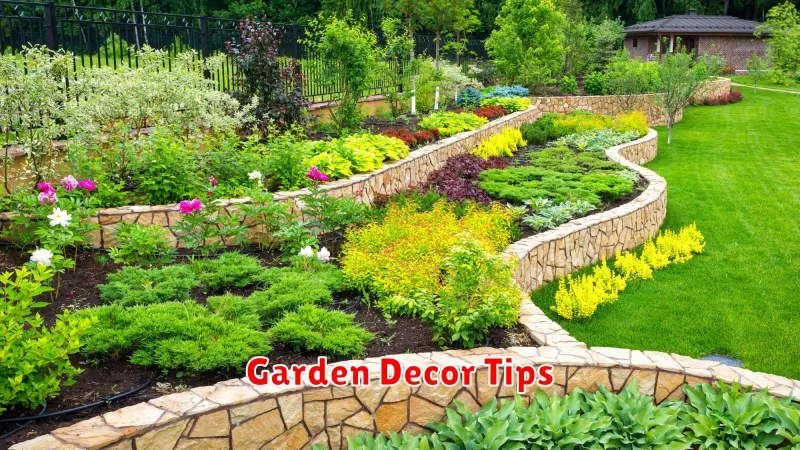Transform your outdoor space into a captivating haven with these 8 unique garden decor ideas. Whether you’re an experienced landscaper or a budding outdoor enthusiast, this article unveils innovative ways to elevate your garden’s aesthetic appeal. Discover inspiring designs that blend functionality with stunning visuals, turning your backyard into an oasis of unique garden decor. We explore a range of creative concepts, from rustic charm to modern minimalism, ensuring there’s something to spark your imagination and elevate your outdoor living space.
Rustic Wooden Pathways
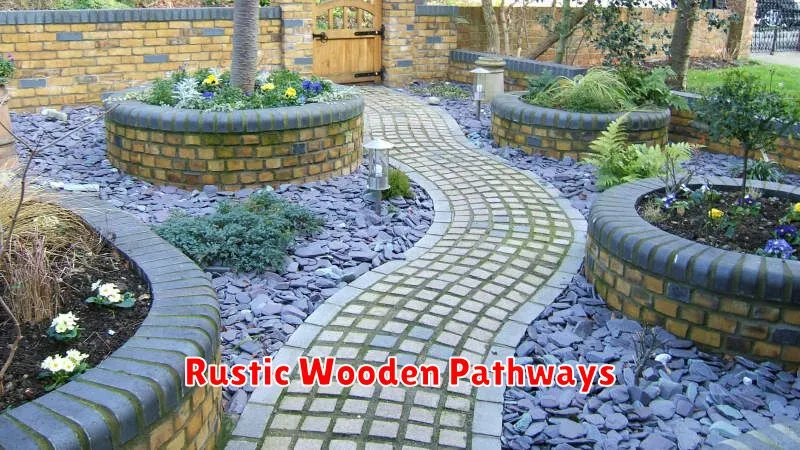
Rustic wooden pathways offer a unique blend of natural beauty and practical functionality to any outdoor space. Their charm lies in their ability to seamlessly integrate with various landscaping styles, adding a touch of rustic elegance while providing a durable and aesthetically pleasing walkway.
The construction of a rustic wooden pathway can vary greatly depending on the desired aesthetic and the surrounding environment. Options range from simple, single-plank walkways to more complex designs incorporating various wood types, sizes, and treatments. The choice of wood is crucial, with durable hardwoods like cedar or oak often preferred for their resistance to rot and decay.
Careful consideration should be given to the placement and layout of the pathway. The route should be planned to minimize disruption to existing flora and fauna, and to ensure easy access to key areas within the landscape. Proper drainage is essential to prevent waterlogging and subsequent damage to the wood. Strategic placement of gravel or other porous materials beneath the planks can help facilitate effective drainage.
Maintenance of a rustic wooden pathway is relatively straightforward. Regular cleaning to remove debris and leaves can help prolong its lifespan. Periodic treatments with wood preservatives can further protect the wood from the elements and prevent damage from pests. Replacing damaged or rotten planks as needed is also important for maintaining the pathway’s structural integrity and visual appeal.
The overall effect of a rustic wooden pathway is one of understated elegance and natural charm. It can transform an ordinary garden or landscape into a captivating space, inviting exploration and providing a connection to the natural world. The investment in such a pathway provides both aesthetic and functional benefits, enhancing the beauty and usability of the outdoor area for years to come.
Water Fountains with LED Lights
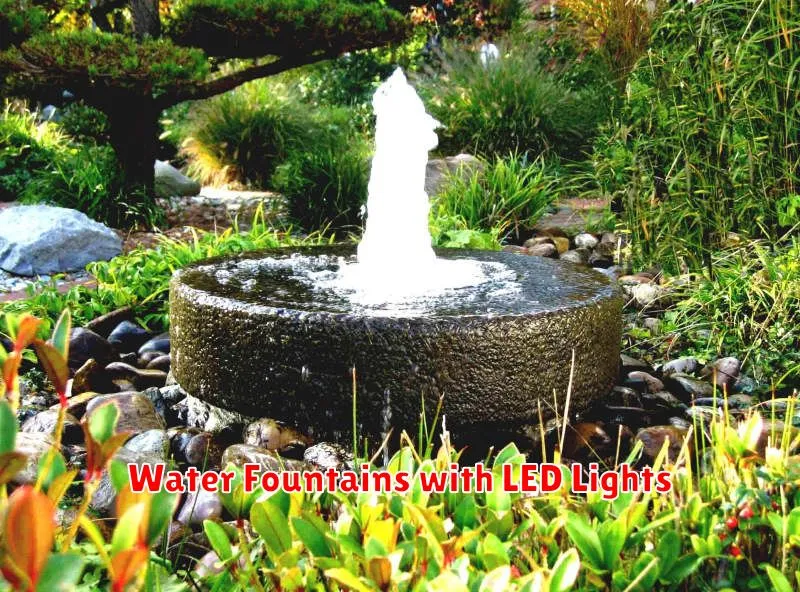
Water fountains, long appreciated for their aesthetic appeal and soothing sounds, have undergone a significant transformation with the integration of LED lighting. This innovative addition elevates these features to a new level of visual spectacle, creating captivating displays that enhance any environment.
The incorporation of LED technology allows for a wide range of customizable lighting effects. Color-changing LEDs can be programmed to cycle through a vibrant spectrum, creating dynamic and ever-shifting visual displays. Alternatively, the lights can be set to a single, consistent color to complement existing décor or create a specific mood. This versatility makes LED-lit water fountains suitable for a multitude of applications.
Beyond the purely aesthetic benefits, LED lights offer several practical advantages. They are exceptionally energy-efficient, consuming significantly less power than traditional lighting options. This results in lower operating costs and a reduced environmental impact. Furthermore, LEDs boast a remarkably long lifespan, minimizing the need for frequent replacements and reducing maintenance expenses.
The diverse applications for LED-lit water fountains are extensive. They are frequently used in residential settings to enhance landscaping and create tranquil outdoor spaces. Commercial applications are equally numerous, ranging from upscale hotels and resorts to modern office buildings and public plazas. Their ability to transform a space with both visual and auditory stimulation makes them a popular choice for designers and architects.
In conclusion, the combination of the calming properties of water fountains and the vibrant versatility of LED lighting creates a truly remarkable feature. This synergy offers a captivating display that enhances any setting, while also providing practical benefits such as energy efficiency and longevity. The versatility and aesthetic appeal of these fountains make them a compelling choice for a wide range of applications.
DIY Hanging Lanterns
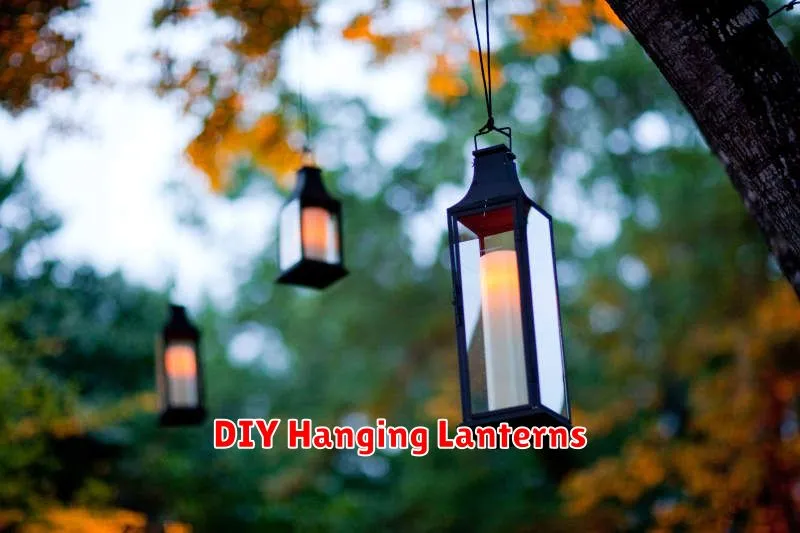
Creating your own hanging lanterns is a rewarding and surprisingly simple project. With a few readily available materials and some basic crafting skills, you can add a touch of ambiance and personalization to any space, both indoors and outdoors.
The beauty of DIY lanterns lies in their versatility. You can adapt the design and materials to suit your existing décor, creating lanterns that complement your style perfectly. Whether you prefer a rustic, modern, or whimsical aesthetic, a homemade lantern can easily be tailored to meet your specific needs and preferences.
Materials typically required include jars (glass or metal), string or wire for hanging, decorative elements (lace, paint, beads, etc.), and a light source (LED tea lights are a safe and convenient option). The specific materials will vary depending on your chosen design and desired look. Consider the overall style of your home or event when selecting your materials.
The process itself is generally straightforward. It often involves cleaning and preparing the jars, adding your chosen decorative elements, and then securely attaching the hanging mechanism. Safety precautions should always be taken, particularly when working with glass or sharp objects. Ensuring your light source is appropriately sized and securely placed within the lantern is also crucial.
Once completed, your DIY hanging lanterns will provide a unique and charming addition to any setting. They can be used to illuminate pathways, patios, or even indoor spaces, creating a warm and inviting atmosphere. The satisfaction of crafting your own decorative items adds an extra layer of enjoyment to the experience.
Trellises for Climbing Plants
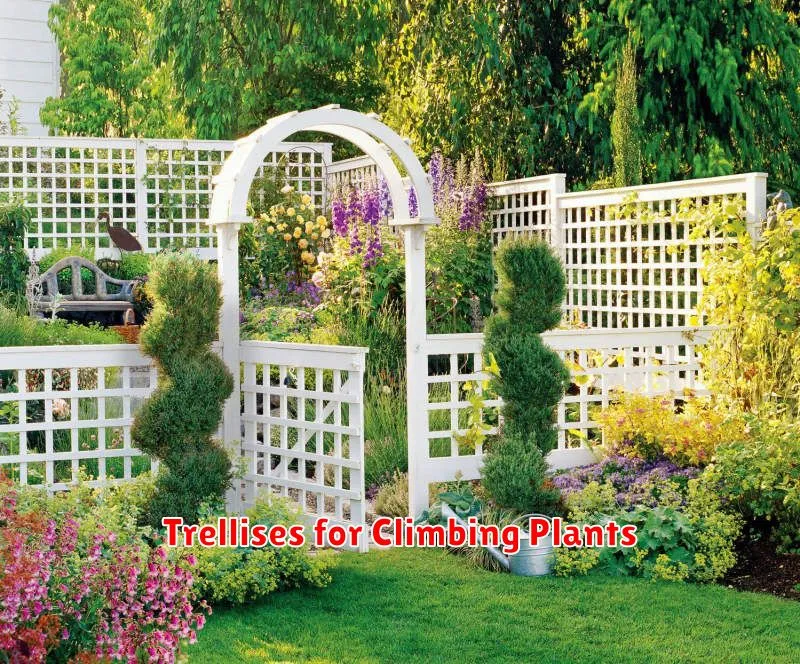
Trellises provide essential support for climbing plants, enabling them to grow vertically and reach their full potential. They offer a multitude of benefits, both aesthetically and practically, transforming gardens and outdoor spaces.
The choice of trellis type depends largely on the plant’s size and growth habit, as well as the available space and overall garden design. Options range from simple, inexpensive designs to more elaborate, ornate structures. Materials commonly used include wood, metal, and plastic, each possessing its own advantages and disadvantages in terms of durability, maintenance, and aesthetic appeal.
Proper installation is crucial for the success of a trellis. Consider the plant’s mature size when determining the trellis’s dimensions and placement. Ensuring adequate support and stability is vital, especially for heavier plants. The trellis should be securely anchored to prevent damage from wind or heavy growth.
Beyond their practical function, trellises enhance the visual appeal of a garden. They can create vertical interest, add texture, and define different areas within a landscape. Carefully selecting a trellis style that complements the surrounding plants and garden design enhances the overall aesthetic.
Regular maintenance is important to prolong the life of a trellis and ensure the health of the climbing plant. This may include cleaning, repainting (for wooden trellises), and inspecting for damage or structural weaknesses. Pruning the climbing plant to guide its growth along the trellis is also a crucial aspect of maintenance.
In conclusion, trellises are indispensable tools for gardeners seeking to cultivate climbing plants effectively and aesthetically. By considering the various factors involved in selecting, installing, and maintaining a trellis, gardeners can create thriving vertical gardens that add beauty and interest to their outdoor spaces.
Upcycled Planter Boxes
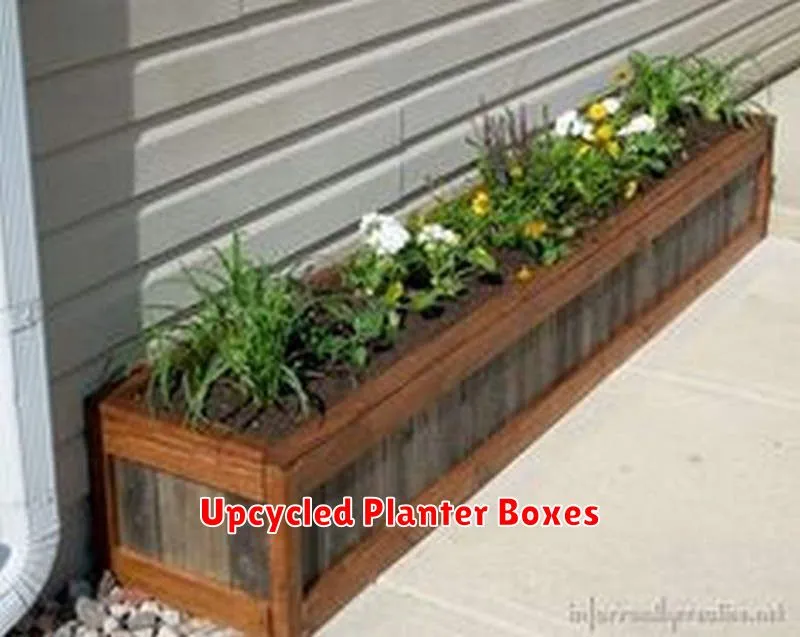
Transforming discarded materials into beautiful and functional items is a rewarding experience, and upcycled planter boxes are a perfect example. These projects offer a sustainable way to enjoy gardening while reducing waste.
The possibilities are virtually endless when it comes to materials. Old crates, wooden pallets, and even metal containers can be repurposed. A little creativity and some basic tools can turn unwanted items into charming additions to your garden or home.
Before you begin, consider the type of plant you intend to grow. Different plants have varying needs for drainage and sunlight. Choosing the right container will ensure the health and growth of your plants. For example, plants that need good drainage should not be planted in containers that retain water.
The process itself is usually quite straightforward. For wooden containers, you’ll likely need to sand down any rough edges and apply a sealant to protect the wood from moisture. Metal containers may require cleaning and possibly painting to prevent rust. Remember to always prioritize safety when using tools.
Adding a personal touch is what elevates these projects. Personalize your planter boxes with paint, stencils, or even mosaic tiles. Let your creativity guide you and make them truly unique. The possibilities are vast and only limited by your imagination.
Ultimately, creating upcycled planter boxes is a fun, eco-friendly, and cost-effective way to enhance your home or garden. It’s a project that combines sustainability with artistic expression, allowing you to create something beautiful while contributing to a greener future.
Garden Arches for Entryways
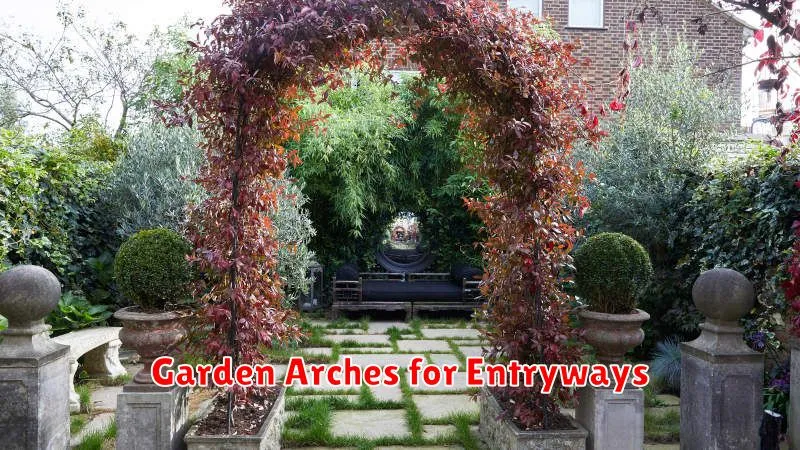
Garden arches are a beautiful and functional addition to any entryway. They can instantly transform a simple walkway into a welcoming and charming entrance to your garden or home. Their versatility allows them to seamlessly blend with various garden styles, from rustic to modern.
One of the most significant benefits of using a garden arch for your entryway is the aesthetic appeal. They create a focal point, drawing the eye and adding a touch of elegance and romance to the space. Climbing plants, such as roses, clematis, or honeysuckle, can be trained to grow over the arch, creating a lush and fragrant canopy that welcomes visitors.
Beyond their beauty, garden arches offer practical advantages. They can provide shade and create a defined space, separating different areas of your garden. This is especially beneficial in sunny climates, offering a cool and shaded passageway.
Material choices for garden arches are diverse. You can find arches crafted from wood, metal, or even PVC. Wood offers a rustic charm, while metal provides durability and a more modern look. The choice ultimately depends on your personal preference and the existing style of your garden.
Installation is relatively straightforward for most garden arches, although some may require professional help depending on the size and material. Proper installation ensures the arch’s stability and longevity, allowing you to enjoy its beauty for years to come. Consider the arch’s weight and the stability of the ground when choosing a location and method of installation.
In conclusion, a garden arch can be a stunning and practical addition to your entryway. Its aesthetic value, practical benefits, and versatility make it a worthwhile investment for enhancing the beauty and functionality of your outdoor space.
Rock Gardens for Minimalist Style
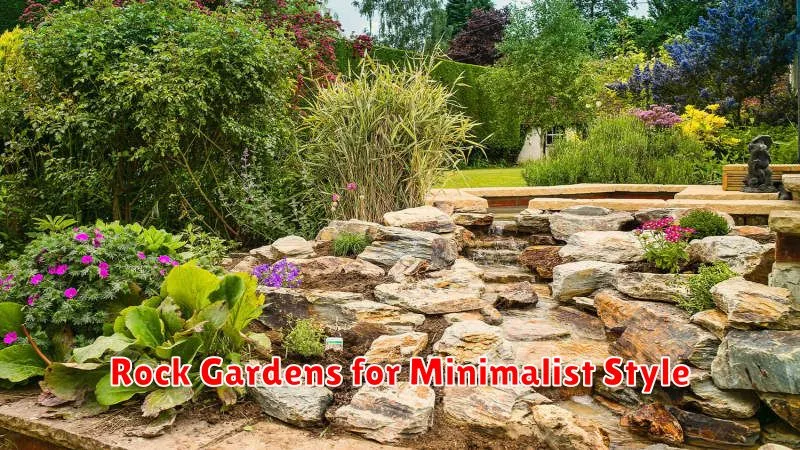
Rock gardens, also known as dry gardens or xeriscaping, are a perfect complement to minimalist design principles. Their inherent simplicity and focus on natural elements align seamlessly with the clean lines and uncluttered aesthetic favored in minimalist homes and landscapes.
The beauty of a minimalist rock garden lies in its reduction. Unlike traditional gardens bursting with vibrant color and a profusion of plants, a minimalist rock garden prioritizes form, texture, and carefully selected elements. This focus on less allows the individual components to stand out, creating a visually striking yet serene space.
Material selection is key. Choose rocks and stones in a limited palette of colors and sizes. Neutral tones like gray, beige, and white create a calming effect, while incorporating a few darker stones can add subtle depth and contrast. Consider the texture of the stones; a variety of smooth and rough surfaces can add visual interest without overwhelming the minimalist design.
Plant choices should be equally restrained. Select a few hardy, low-maintenance plants that complement the stones without competing for attention. Succulents, grasses, and drought-tolerant groundcovers are excellent options. Their simple forms and textures enhance the overall minimalist aesthetic.
Placement and arrangement are crucial for achieving a balanced and visually appealing minimalist rock garden. Consider the overall layout of your space and position the rocks strategically to create visual flow and interest. Avoid overcrowding; allow negative space to enhance the impact of each element. Careful planning will ensure a harmonious and serene environment.
Finally, maintenance for a minimalist rock garden is minimal. Occasional weeding and the occasional trimming of plants are usually all that is required. This low-maintenance aspect is another appealing attribute for those embracing a minimalist lifestyle.
Decorative Garden Benches
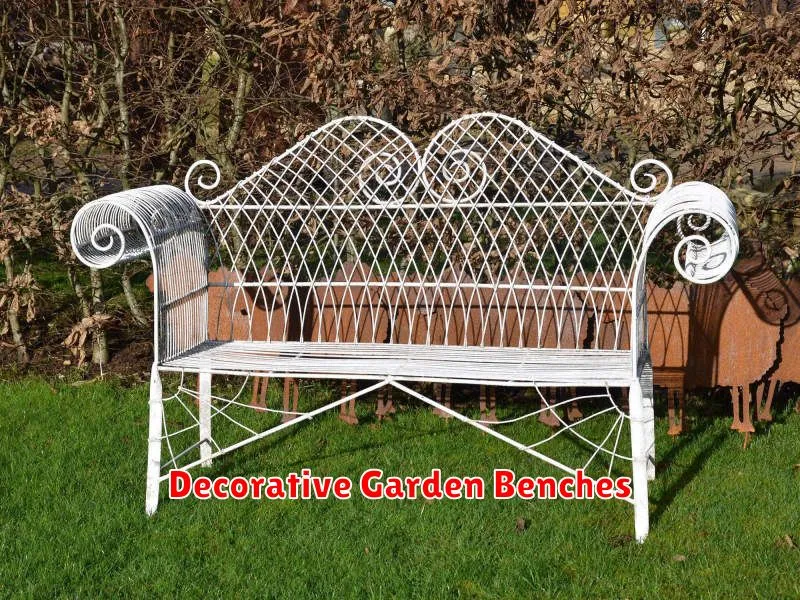
Garden benches are more than just seating; they’re functional works of art that enhance the beauty and usability of your outdoor space. A well-chosen bench can transform a bland area into a captivating focal point, inviting relaxation and contemplation.
The style of your bench should complement your garden’s overall aesthetic. A rustic, wooden bench might be perfect for a cottage garden, while a sleek, metal bench could suit a modern minimalist design. Consider the materials – from sturdy wood and wrought iron to durable concrete and weather-resistant wicker – each offering a unique look and feel.
Placement is crucial. Think about where you’ll use the bench most. Will it be a quiet spot for reading, a place to enjoy morning coffee, or a gathering point for friends and family? Consider the view from the bench – perhaps position it to take advantage of a stunning vista or a beautiful flowerbed.
Beyond aesthetics, consider the practical aspects. Comfort is paramount. Choose a bench with a comfortable seat height and back support, if desired. Also, ensure the bench is durable enough to withstand the elements and regular use. Regular maintenance, such as cleaning and occasional repainting or staining (for wooden benches), will extend its lifespan.
Ultimately, selecting the right decorative garden bench involves finding a balance between style, functionality, and durability. It’s an investment that will pay dividends in beauty and enjoyment for years to come. Let your personal style guide your choice, and create a charming and inviting outdoor retreat.

